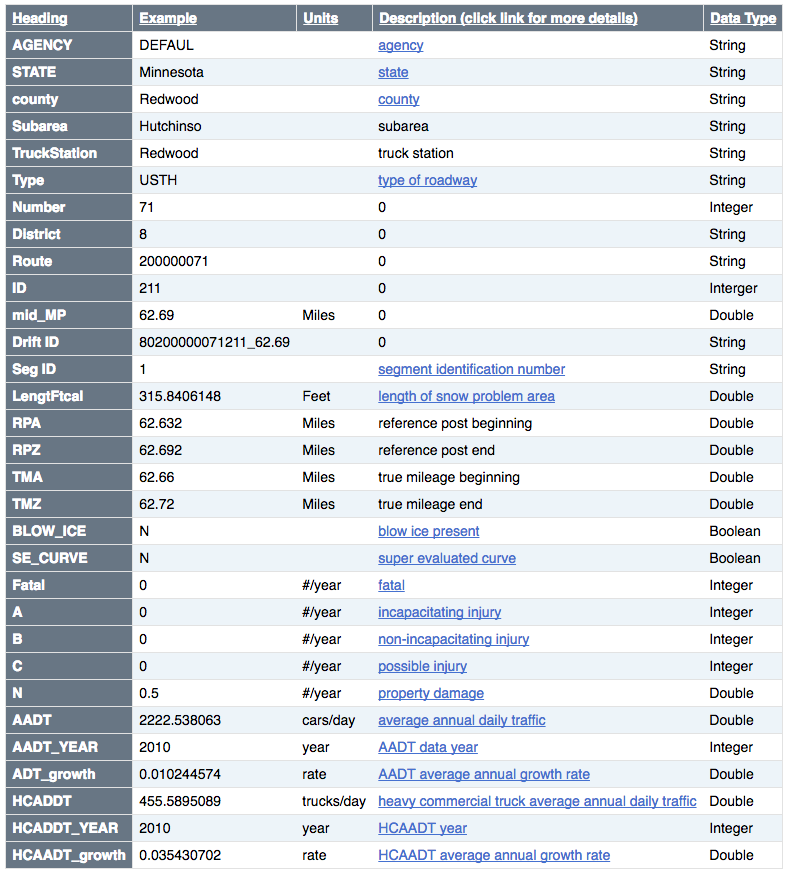Parameters
- Agency_Parameters.csv: Agency parameters comma separated values file
Equipment
- Agency_Parameters_Equipment.csv: Agency equipment parameters comma separated values file
Snow Problem Area
The snow problem data table is where all of the data for each snow problem area is stored. The tables below outlines the headings, examples, units, description, and data type. When a new analysis is saved the snow problem area data is NOT updated. The data for the analysis is saved in a separate table labeled inputs. This is done to prevent users from modifying the data during an analysis. The suggested values remain unchanged when a user inputs data into the input fields. Users can run an analysis of a snow problem segment without a problem segment from the snow problem data table. Again this will NOT save a new site to the show problem area data table.
Updating or adding snow problem area data to the database requires that the data be in a specific file format. The comma separated file Agency_Snow_Problem_Area.csv should be used as a template for updating or adding snow problem areas. The first row of the template is the column headings which must remain unchanged and in the same order. The second row of the template is an example snow problem area. Each snow problem area that needs to be updated or added requires a separate row. The critical column to determine whether the data is updated or added is the segment identification number (Seg ID). To update existing data the value in this column must be equal to the value in this column for the existing record. To add a new snow problem area the value in this column must be different from all the other values in this column.
The recommend procedure for users to update the snow problem area data for their agency is as follows.
- Check the existing database by starting a new analysis and selecting the county in which the record should occur. The problem segment drop down box will list the segments in that county organized by road and district.
- If the problem segment exists.
- Verify the data by looking at the data in the suggested buttons.
- If the data is correct or their is no need to update it then feel free to proceed with the analysis. Updating the data is not required to do an analysis.
- If the problem segment can not be found in the problem segment drop down box then it is likely not in the data table.
- If the user is not interested in adding the site to the show problem area data table then feel free to proceed with the analysis.
- If the user is interested in adding or updating the site in the snow problem database.
- then the comma separated file Agency_Snow_Problem_Area.csv should be downloaded from the user guide.
- The csv file can be opened in Microsoft Excel or a text editor. Be sure to save the file as a comma separated values (csv) file.
- Each new or updated snow problem area must be entered as a new row in the csv file. All columns must be filled out when updating. Not just the columns to be updated as all data will be overridden in the data table. The table below can be used to guide data entry. The data must follow the rules for data type to avoid issues when uploading.
- Once the the csv file is complete the user should email this file to the agency administrator (agency owner).
- The agency administrator will then verify the file and the data and upload themselves or submit it to the tool administrator.


